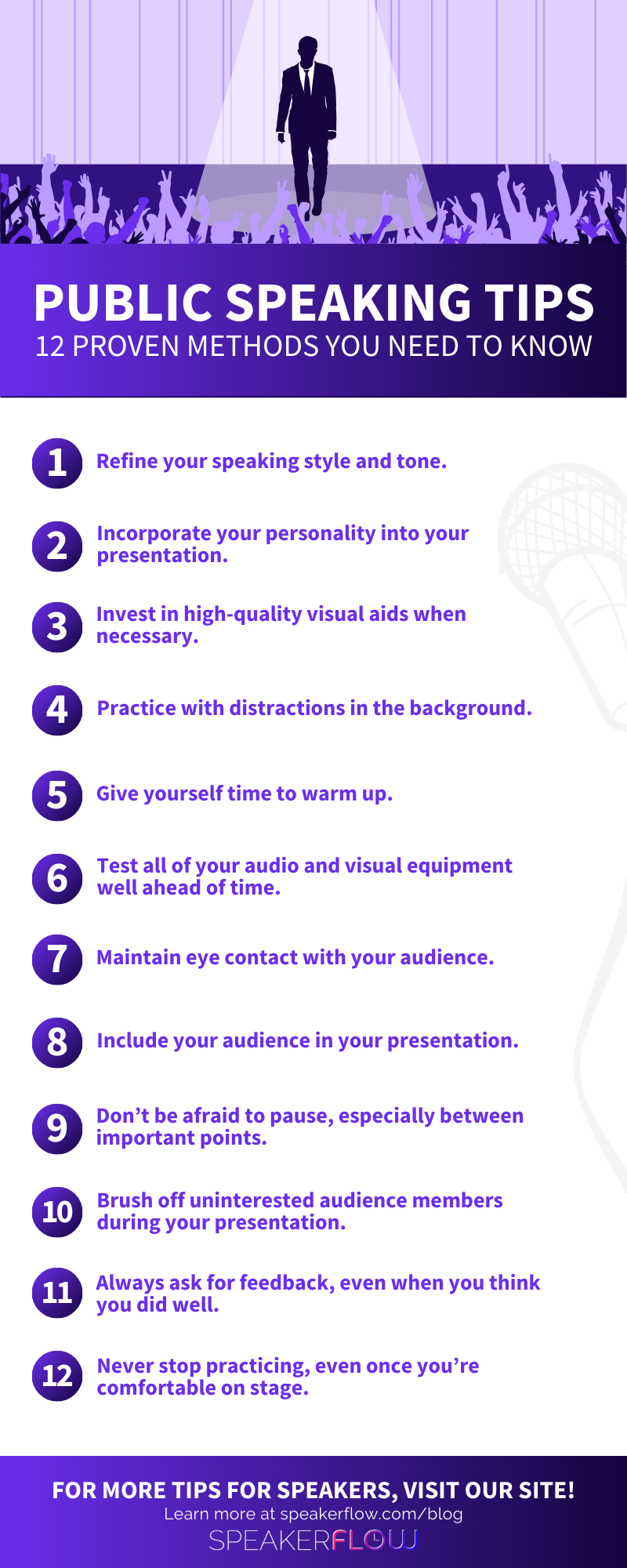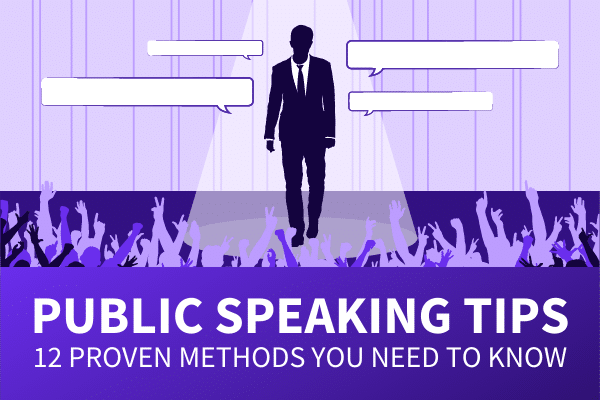Whether you grew up with an interest in science or not, you’ve likely heard some variation of the phrase “improve or get left behind”. Coined by Charles Darwin, the original phrase, “adapt or die,” is a little harsher. But, as severe as it sounds, the meaning behind it rings true even outside of its origin in biology, including the topic of this guide: public speaking tips.
Like many industries, professional speaking has, over the last several decades, become a worldwide business, and, now more than ever, if you want to be a public speaker, you can. Yet, with the rising popularity of public speaking, competition between speakers has also become increasingly fierce. You can’t simply get on stage, talk briefly, and get handed a check. You have to manage your speaking opportunities carefully, hone your skills constantly, and monitor industry trends vigilantly. In all aspects of your speaking career, you truly do have to “improve or get left behind.”
With that in mind, let’s look at 12 of the most important public speaking tips to keep in mind as you work to improve. That way, you can stay ahead of the curve and stand out from other speakers, even if you’re just getting started.
- Refine your speaking style and tone.
- Incorporate your personality into your presentation.
- Invest in high-quality visual aids when necessary.
- Practice with distractions in the background.
- Give yourself time to warm up.
- Test all of your audio and visual equipment well ahead of time.
- Maintain eye contact with your audience.
- Include your audience in your presentation.
- Don’t be afraid to pause, especially between important points.
- Brush off uninterested audience members during your presentation.
- Always ask for feedback, even when you think you did well.
- Never stop practicing, even once you’re comfortable on stage.
Refine your speaking style and tone.
The first and most basic of our public speaking tips is to define your speaking style. When you’re meeting someone new in a non-professional setting, their speaking tone is probably one of the first things you notice. Maybe it’s warm and invites you to listen closely. Maybe it’s blunt and keeps you at arm’s length. Either way, a person’s speaking style and tone almost always shapes the way we view them and whether or not we want to get to know them better.
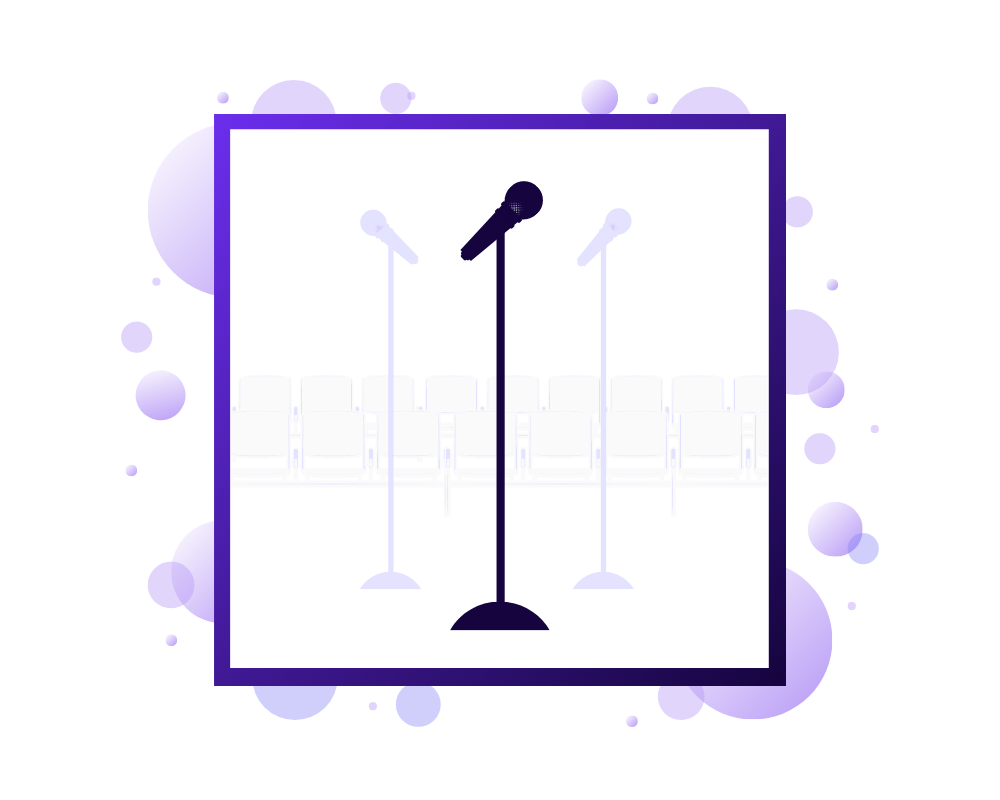
Likewise, in a public speaking setting, the tone with which you address your audience can determine whether or not they want to pay attention. Ideally, you want to establish an air of authority and control, that you’re the expert and they’ll benefit from hearing what you have to say. Nailing your tone and speaking style is an important part of that.
Generally speaking, setting the right tone is a two-part process. The first part is obvious: know your audience. Are you speaking at a serious conference or event? Is your audience open to jokes? How old is your audience, and are there tones or styles to avoid as a result? The answers to these questions will tell you a lot about what to factor into your presentation. More importantly, though, the more accurately you answer them, the better your chances of setting the right tone.
After that point, the second step to finding the right tone is defining your style. One of the biggest signs of an inexperienced speaker is the tendency to slip into a monotone, and it simply takes time and practice to overcome this. But, as long as your tone suits your audience and your style isn’t monotone, the exact nature of your speaking style and tone is really up to you.
Incorporate your personality into your presentation.
That brings me to the second in our list of public speaking tips: be yourself! Even though you’re appearing as an authority figure, your audience still wants to know what makes you special, what makes you memorable, and how they can connect their experiences to the ones you used to grow to the person you are today.
To share these details, consider where you can add them to your presentation. They can be blatant, like a story in your speech, or subtle, like the colors of handouts accompanying your presentation. Below are a few examples, to help you brainstorm.
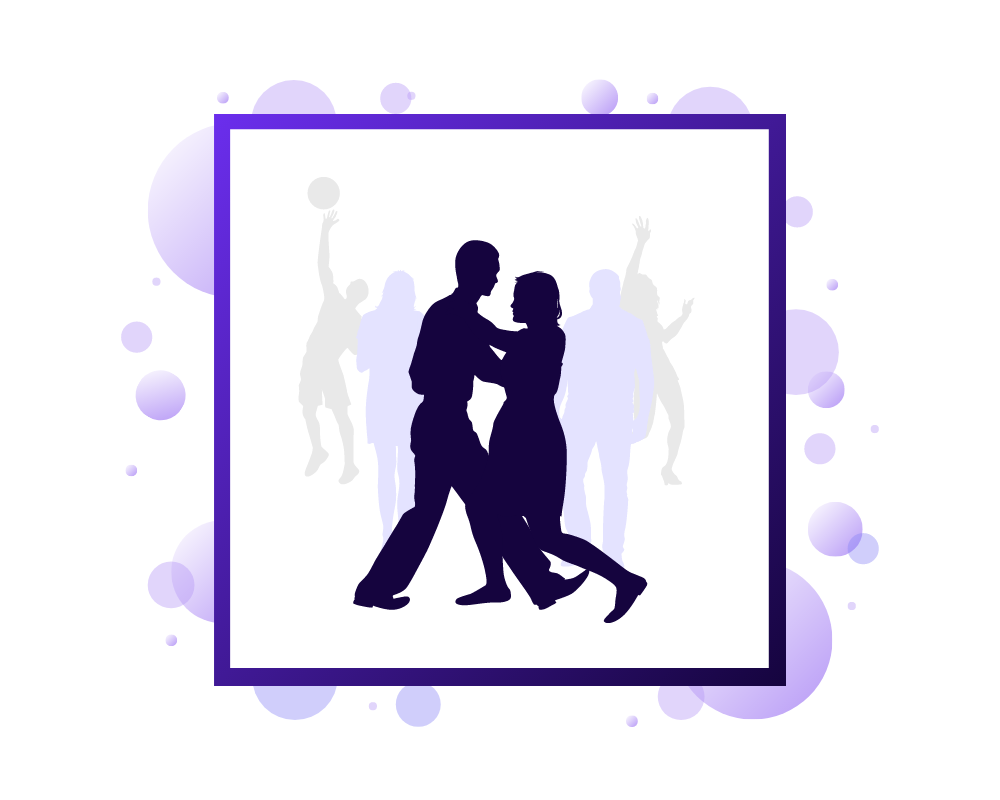
- Clothes: Use colors and style to subtly share a bit about your personality. Personally, for example, I would choose dark or neutral colors because I’m not overly feminine.
- Sense of Humor: In your speech, work in the humor you find funny (jokes, sarcasm, etc). Not only will it make you more engaging when you’re onstage. It’ll also make you more memorable when you leave.
- Pace: The speed at which you move around the stage and at which you speak can inadvertently share a lot about you. Slow generally implies confidence, fact implies nervousness, etc. Keep this in mind as you move about.
Ultimately, incorporating your personality is a match game. One way to play is to list the strongest elements of your personality – sense of humor, friendliness, etc. – and think of them as assets. Once you’ve done that, identify which ones fit your audience and match them up.
From there, the possibilities are endless, but it’s important to be careful, especially if you’re a less experienced speaker. It’s easy to misread an audience, and it usually requires a certain amount of trial and error to figure out what works and what doesn’t. Be yourself, but go slow.
Invest in high-quality visual aids when necessary.
Number 3 of our public speaking tips focuses on the visual aspect of a speaking presentation. Like any performance, public speaking is largely about sharing information, but without visual aids, a large portion of your speech can go completely over your audience members’ heads. That is unless you have something to engage their other senses.
Looking at TED Talks, for instance, some of the most-viewed talks are accompanied by visuals to make them more digestible. Below are a few examples to inspire you, as you create your own.

- “How Great Leaders Inspire Action” by Simon Sinek: In this talk, Sinek uses a drawing board and marker to illustrate his points. This works exceptionally well because it’s so simple and because of the small number of audience members.
- “Inside The Mind Of A Master Procrastinator” by Tim Urban: In this talk, Urban uses a pre-designed slide presentation to reinforce his ideas. This allows him to share a lot of information in a short timeframe while also sharing a little of his personality.
- “All It Takes Is 10 Mindful Minutes” by Andy Puddicombe: For this talk, Puddicombe keeps it simple and opts for juggling balls instead of a hand-drawn or graphic design.
When preparing your own visual aids, it can be hard to figure out how to use them in the right way. However, the one thing you shouldn’t do is neglect or minimize them. Instead, try to think of visual aids as assets, especially if you’re covering a lot of information or delivering an extended address. Then, build them into your presentation, so they support your words and make them even more memorable for the crowd.
Practice with distractions in the background.
The fourth of our public speaking tips to keep in mind is to practice in difficult environments. Admittedly, at first glance, this may seem contradictory. Why would you spend endless hours practicing and honing your approach, adding and subtracting material, only to subject yourself to needless distractions?
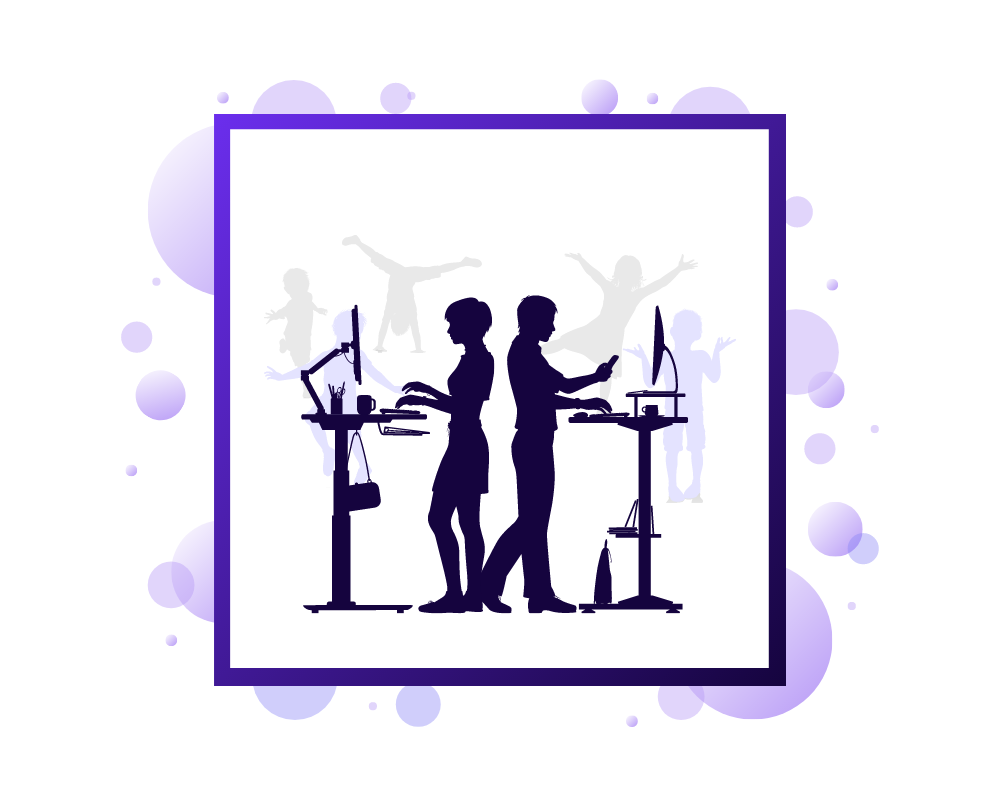
Two reasons. First is that distractions are not needless, even though they may seem so during practice. After all, outside of practice, distractions happen, and preparing for them is key. When you hear an unexpected noise coming from the audience or a question comes out of the blue, you need to have some idea how you will handle it. Additionally, the more distractions you’re ready for, the more impressed your audience will be when they actually occur.
The second reason to practice with distractions is more subtle but just as important. Believe it or not, distractions can be a major tool to help you improve both your speech style and the details of your presentation.
This is especially true in the era of Zoom meetings and presentations. How many times in the beginning of 2020 did we see a well-known public figure have to deal with interruptions from kids, dogs, or technology snafus, then get derailed as a result? Take, for example, political director Lizet Ocampo, who accidentally turned herself into a potato on a company Zoom call and couldn’t figure out how to change herself back.
In your own virtual presentations – and live speeches on stage – if you’ve deliberately engineered these distractions in advance, you can let them roll off your back. In fact, you can actually use the timing and degree of whatever distractions you choose to smooth out the rough spots and improve, so it’s well worthwhile to add this tactic to your toolkit.
Give yourself time to warm up.
Number 5 in our list of public speaking tips is one many new speakers skip: Always take the time to warm up. As any experienced speaker will tell you, beginning a speech or a presentation represents a major shift – physically, mentally, and emotionally. Yes, there are great speakers who can do a cold open, but they’re few and far between. Given that basic fact and the small number of speakers that fall into this category, some kind of warmup is more or less mandatory, especially if you’re a new or inexperienced speaker.
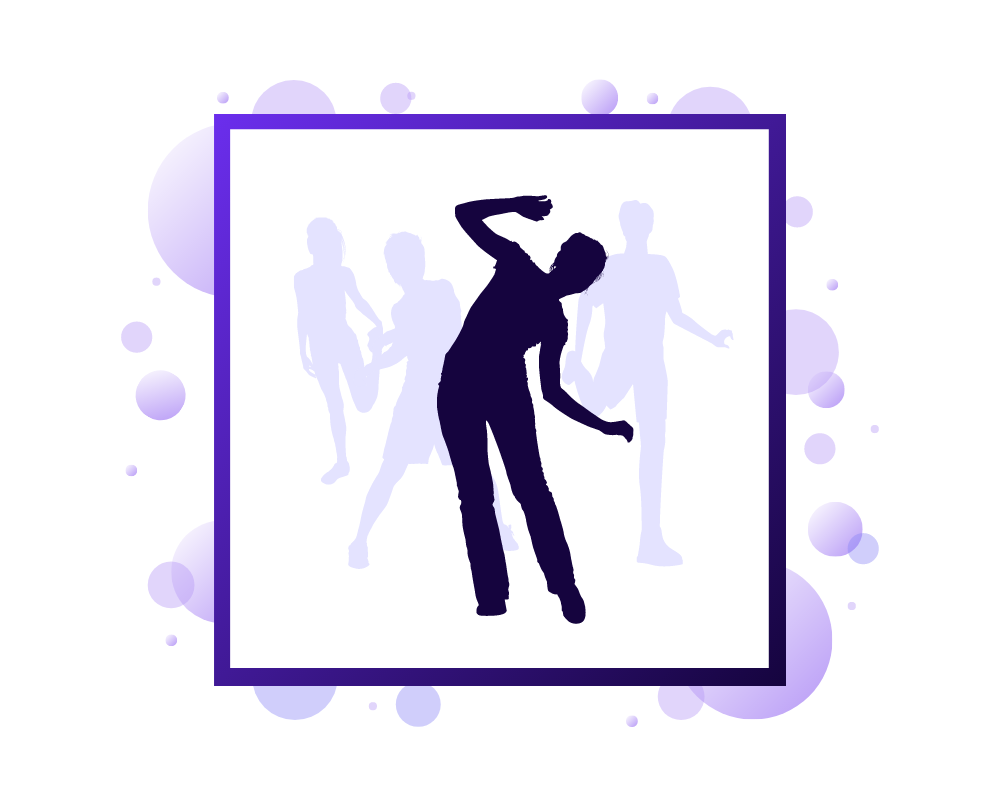
When it comes to the warm-up itself, your goal is to plan a path from unprepared to prepared. Then you need to turn that path into a routine that makes you feel confident and ready to go. Below are a few recommendations from speaker and University of Maryland masters program director Tricia Homer:
- Breathing Practice: “Inhale through your nose, exhale through your mouth. Fill your diaphragm, try to hold your breath as long as you can, then push the air out. Breathe slowly.”
- Facial Warm-Ups: “You can physically rub your face, make funny faces, open and close your mouth, stick out your tongue – anything to limber up the muscles in your face and prepare you to speak.”
- Tongue Twisters: “Any will do, including the classic, ‘Peter Piper picked a peck of pickled peppers,’ or ‘red leather, yellow leather.’ Or short and simple: ‘Unique New York.’”
These are just a few of the many things you can do to prepare before a presentation. Regardless of which you choose, set aside time to do something. The goal is to get yourself into a state of readiness, so that when the bell rings you’re ready to answer the call.
Test all of your audio and visual equipment well ahead of time.
After preparing mentally for your presentation, make time for handling the sixth of our public speaking tips”: preparing your tech. Whether you’re speaking virtually or at a live event, you’re almost guaranteed to rely on technology. For both “realms” of the speaking industry, we’re talking microphones, laptops, visual aid software (PowerPoint, Google Slides, etc.), and a camera, at the very least. Consequently, before a presentation of either kind – live or virtual – it’s imperative that you research your options to find tools that you can depend on, speech after speech.
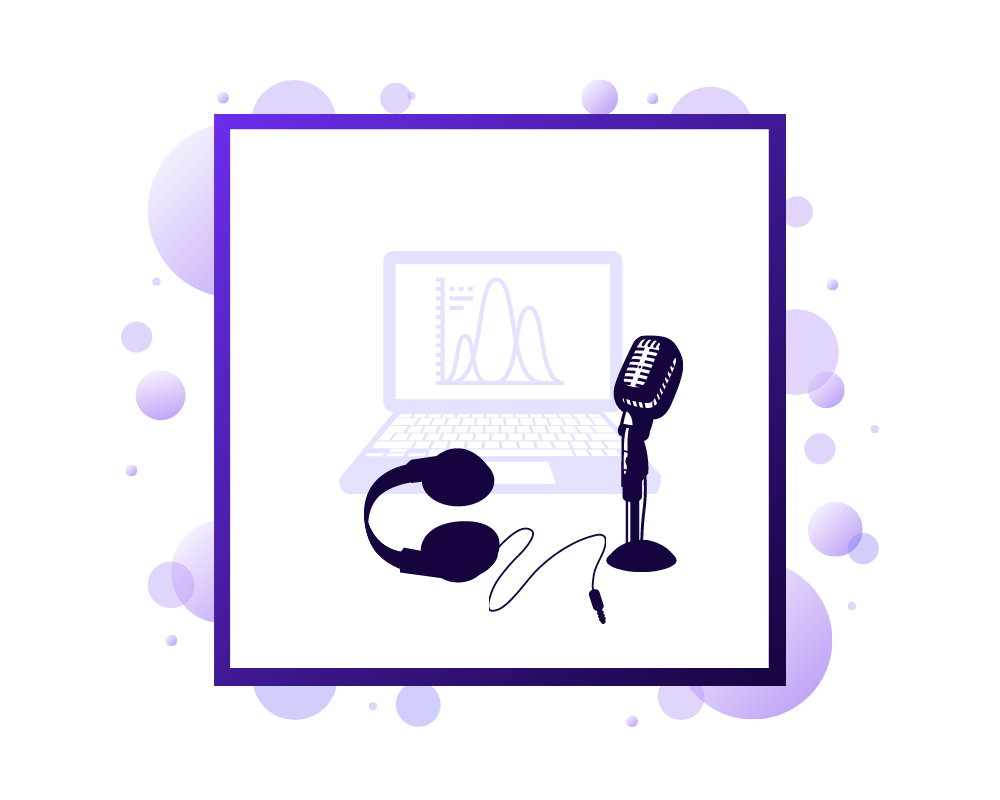
From there, once you’ve found reliable gear, put it to the test through extensive experimentation and practice. Even with the most well-known speakers, snafus happen, sometimes due to the gear itself and other times due to “operator error.” To prevent gaffes like this from happening, preparing ahead of time. Essentially, like practicing with distractions, testing your equipment is about preparing for the worst-case scenario.
Once you’ve ironed out those scenarios for yourself and practiced informally, it’s also important to check in with the audio/visual (A/V) team for your event. If possible, meet in person to test your equipment with theirs, to make sure it all “plays nice.” If you can’t meet in person, compile a list of questions, regarding their stage setup, including questions like, “How many outlets are there around the stage?” and “Will I be able to connect my own laptop, or do I have to use one of yours to display the visual aids?”.
In short, all of your questions for the AV team and all of the testing you do yourself should allow you to rule out any challenges that could pop up on the day of the event. That way, when that time comes, you can focus solely on wow-ing your audience.
[hubspot type=cta portal=5815852 id=4423b6b8-d7d0-4f03-b792-184db7c3284b]
Maintain eye contact with your audience.
The seventh in our list of public speaking tips is all about engaging with your audience. More than anything, every audience wants to know a few things above all else, including why they should care about your message but also why they should listen to you, specifically. In other words, they want to know you’re invested in their attention and will work for it. That way, they will willingly listen and remember your content, even after you’ve left.
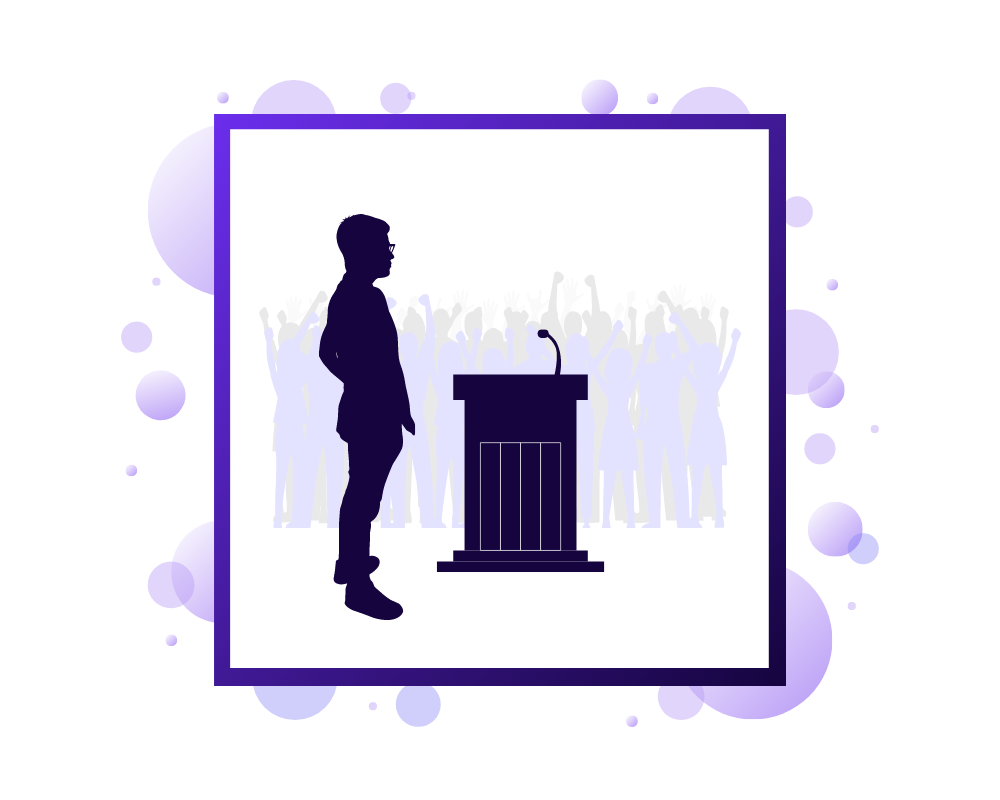
One classic way to accomplish this is to consistently maintain eye contact with audience members. This one of the trickiest things for any speaker to master, but it’s also one of the most important items on this list.
Why? Simply put, eye contact establishes a sense of connection between the speaker and the audience. And that kind of rapport tends to spread quickly once it gets started.
But this is also part of why it can be so tricky to pull off. Many speakers work hard right off to make eye contact with those in the front rows, but they quickly forget about the rest of the room. The result is a scattered speech that quickly turns into a lost opportunity. A good speech that could have been great goes by the boards, and the folks in the back who got lost in the shuffle will often forget the speaker in a matter of hours.
Having said all that, the concept of eye contact is difficult to practice completely. For any speaker, it’s easy to rehearse with a chosen audience, but making eye contact tends to be a “live” talent that can only be developed through experience. With your own presentations, keep this in mind, and don’t beat yourself up if it’s not natural for you right away.
Include your audience in your presentation.
Number 8 of our public speaking tips is another exercise in audience engagement: audience participation. One of the best ways to augment eye contact, bringing your audience into your presentation can be done in any number of ways and can lend even more excitement to a memorable speech. It can also allow you to further share your personality, based on the activities you choose.
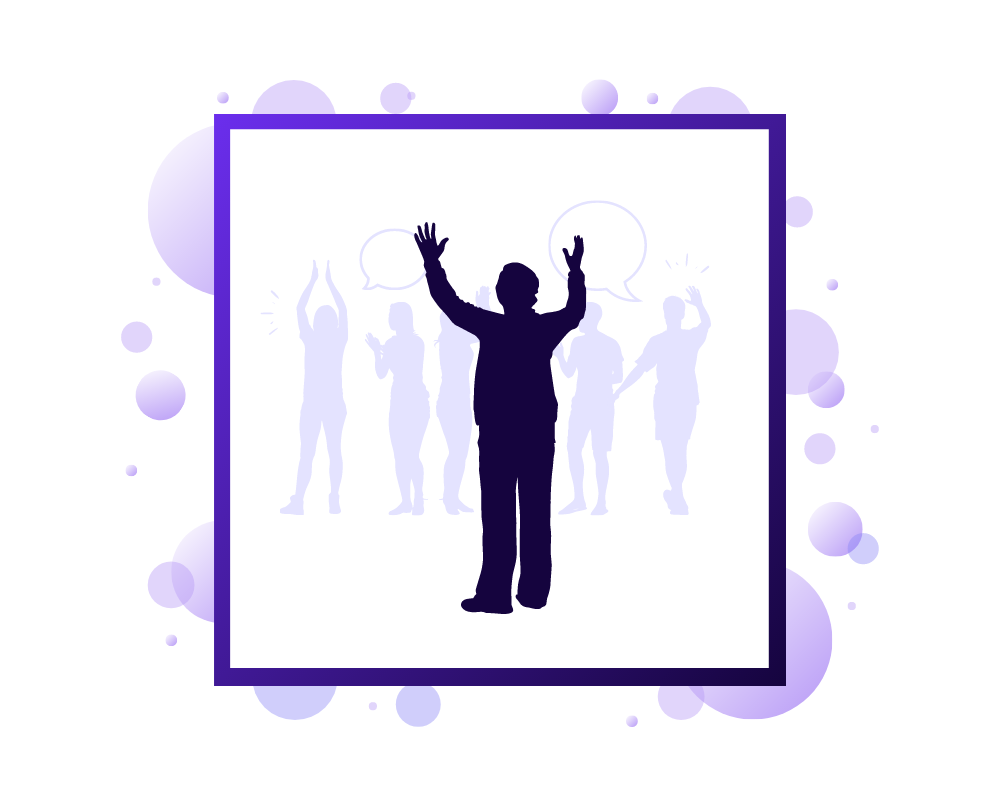
Depending on your venue, there are a wide variety of these activities that can meet these goals. In a live presentation, for example, many participation segments can be active or mobile, such as conversations between audience members or doing simple exercises in place.
On the flip side, for virtual presentions, many audience engagement tools aren’t physical as much as they are technological. These can be tools like companion apps or games or simple actions, like leaving room for questions. Among our own clients, there are a handful of strategies we’ve seen succeed, including the following:
- Post-Event Q&A Sessions or Panels: Virtual speaking is more of a conversation than a performance, so make time to actually converse with your audience.
- Event-Wide Gamification: What better way to engage audience members than to reward them for their input? Give members points for participating, for example, and award the winner with a free book.
- Live Polling: As part of your presentation, ask audience members questions and collect their answers live. Then, analyze them in real-time.
Whatever your preferred activity, though, remember to keep a sense of balance in the way you apply it. Too many moments of inclusion can interrupt the flow of your speech, and this can end up being a distraction that reduces your overall effectiveness.
Don’t be afraid to pause, especially between important points.
Ninth of our public speaking tips goes back to the topic of warm-ups, specifically remembering to breathe. Having a sense of pace and cadence is one of the most underrated aspects of being an effective speaker. But pace isn’t an easy thing to master. For many people, it involves altering the natural rhythm of their speech, which often includes trying to break long-established verbal tics and habits. The biggest mistake inexperienced speakers make when they get flustered is to start to rush, and when that happens the results are rarely good.
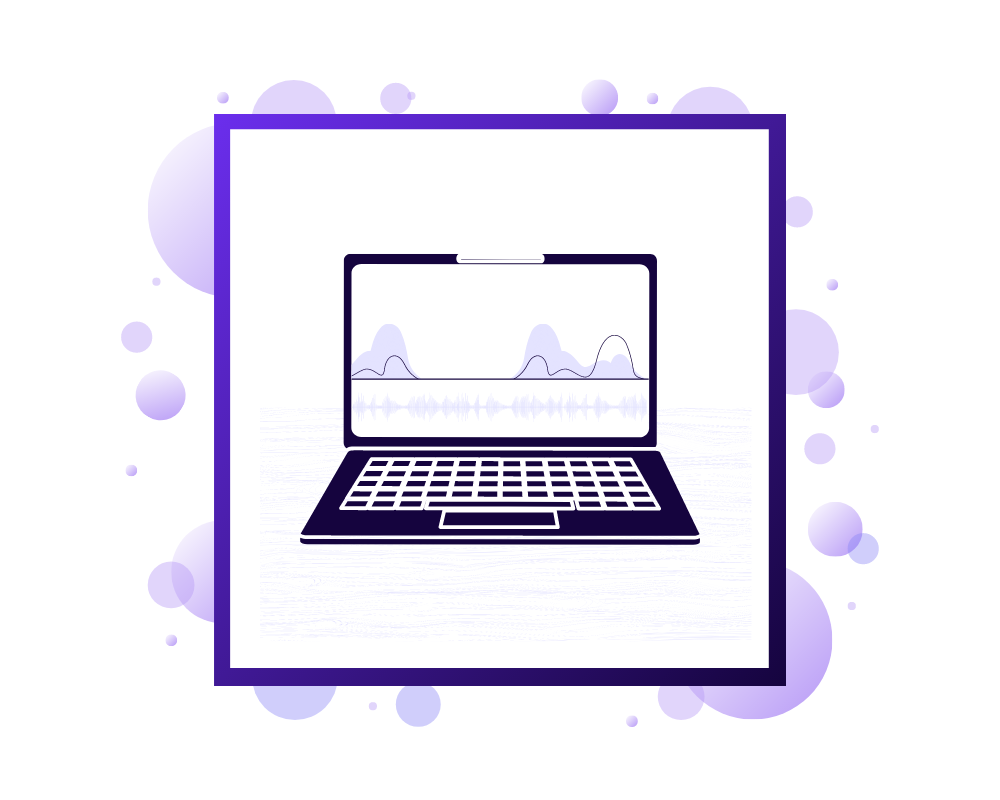
Fortunately, there are plenty of ways to improve. Simple practice is the most obvious one, both solo and in front of others, such as friends, coaches and even small sample audiences put together for the occasion.
That said, practice isn’t the only way to get better, and there are plenty of ways to make the most of your practice sessions when coaching yourself to slow down. One easy addition is a camera, so you can record yourself as you practice. Especially if you’re self-conscious about your speaking abilities, watching a video of yourself in rehearsal doesn’t just allow you to build confidence in your material. It also lays bare many habits you may not even realize you have.
Personally, for instance, one of my nervous tics is to repeatedly tuck my hair behind my ears as I’m speaking. However, I had no clue I was doing it, even after practicing with others. It wasn’t until I saw myself on camera that I realized, “Wow, that is really distracting from the words I’m saying.”
Likewise, in your own practice, keep an eye out for things you’re doing to distract the audience from your message. Then, after you conquer those tics, focus on speaking slowly and clearly.
Brush off uninterested audience members during your presentation.
The tenth and most difficult of our public speaking tips is another audience-related word of advice, namely that it’s important to ignore the audience members that don’t seem interested during your presentation. It sounds tough – and, admittedly, it can be – but even in the best speeches from the most accomplished speakers, it’s almost impossible to keep the entire audience engaged for every moment of a presentation.
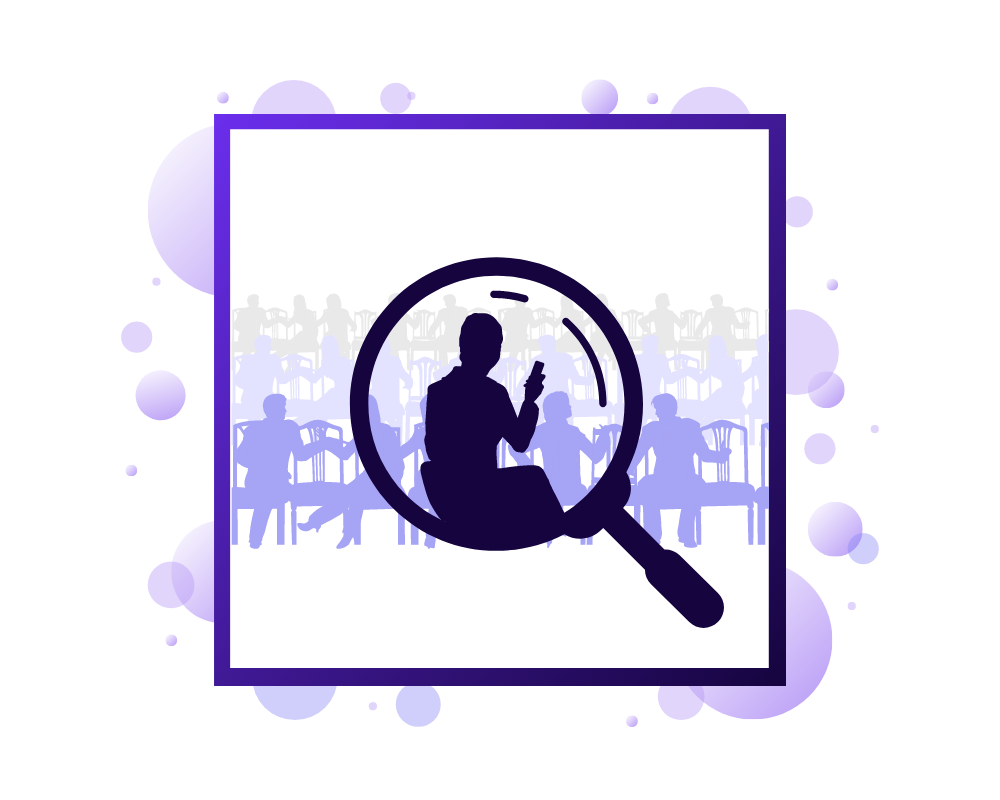
So, what’s the answer? Simply put, whatever negative reactions or feedback you receive in the moment, make it your mission to let it roll off your back. It’s easy to panic when you try to make eye contact and you happen to see people in the audience who aren’t actively engaged, but it’s inevitable. The best thing you can do is to develop some coping mechanisms beforehand, so it doesn’t distract you on the day of the event. Remember: the more you can prepare for distractions, the less impactful they’ll be in real life.
To start with, the simplest and quickest coping mechanism is to shift your gaze and make eye contact with someone who’s obviously interested, as this can often help you regain your footing. Another way to deal with this is to realize where you are in your speech. The problem may be that you’re in a transition section and your voice has flattened out a little, in which case you may need to shift to some of your more compelling material.
Admittedly, it does take experience to do this, but you’ll see it all the time if you watch great speakers in action. When you do, you’ll see the time and effort they’ve put in to get past any dodgy moments, and there’s no reason you can’t put in that same kind of effort and get great results. 👍
Always ask for feedback, even when you think you did well.
Number 11 in our list of public speaking tips is to always ask for feedback, and I mean always.
It may seem obvious, but you’d be surprised at how many speakers either don’t do it at all or don’t do it enough. On one hand, many novice speakers are too intimidated to ask for a take on their performance, which is certainly understandable. On the other hand, many experienced speakers jump to the conclusion that because they’re comfortable on stage, they don’t have room to improve.

In the end, though, either explanation winds up being an excuse and, honestly, a bit of a trap, too. Feedback is going to come at you, directly or indirectly, and the simple fact is that some of it will be positive and some won’t. Like preventing uninterested audience members from ruining your mood, your job with all feedback is to see it as an opportunity to grow.
As cheesy as it sounds, it really is true that sometimes, the only way to succeed is to first fail. All great speakers know this to at least some extent, and many talk about the lessons they’ve learned from negative feedback as the best thing that ever happened to them.
The flip side is that life as a public speaker can be full of great surprises. Nearly every great speaker who started out being scared witless to get feedback has been shocked by some kind of unexpected positive feedback from a talented would-be mentor.
Most of us tend to focus on the mistakes we make and our supposed inadequacies, but these can be overcome by getting the right kind of feedback. And the bonus here is that the more you ask for feedback, the easier it gets to do. You just have to start somewhere.
Never stop practicing, even once you’re comfortable on stage.
Finally, last but definitely not least of our public speaking tips is an age-old truth: You should never stop practicing.

One of the issues that often comes up among speakers has to do with reaching different levels of success. It’s very tempting to say, “Okay, I’ve made it” and cut back on your level of practice, and some people even quit practicing altogether. But, ultimately, this is a bad idea. It may feel like you’ve made it, but one of the most common results of practicing less or stopping is slippage, which is costly to the quality of your presentation and, eventually, your wallet.
In addition, in the age of virtual presentations, constant practice is more important than ever, as new technology brings new challenges for speakers of all experiences. Even great speakers will admit that it’s nearly impossible to master all of them, even if you’re trying to practice routinely.
A lot of what this all boils down to is becoming a constant student of your craft. It’s hard to do, and all of it requires time, effort, and an unwavering willingness to learn. Nevertheless, even though the work itself may be hard sometimes, it will almost always pay off in the end.
For more information about becoming a public speaker, professionally, check out our previous article, “How To Become A Public Speaker: The Beginner’s Guide.”
Additionally, if you’re simply trying to boost your speaking skills and still over a fear of the stage, no worries! I’m right there with you, and we have a guide for that, too, to help you gain confidence. Learn more here! 👍
